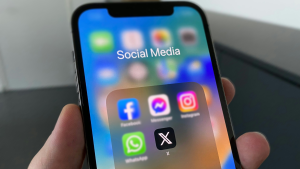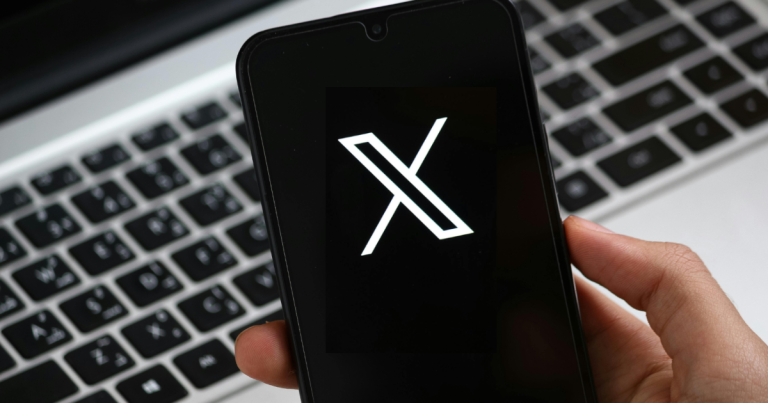A Hacker’s Free Leak Sparks Global Privacy Concerns
Twitter data breach in April 2025 sent shockwaves across the globe, with over 200 million user records leaked by a hacker—for free. This isn’t just another headline in the cybercrime world; it’s one of the largest leaks in recent memory involving a mainstream social platform. The Twitter data breach underscores the fragile nature of digital trust.
According to multiple cybersecurity analysts, the dataset includes usernames, profile creation dates, follower counts, and most critically—email addresses. While no passwords or phone numbers appear to be included, the implications are still massive. The leak makes millions of users vulnerable to phishing attempts, impersonation, doxxing, and future social engineering attacks.

How Did the Twitter Data Breach Happen?
The origin of the Twitter data breach reportedly dates back to an old vulnerability in Twitter’s API that was discovered and patched in 2022. However, the damage was already done. During the window when the flaw was exploitable, hackers could match Twitter handles with the email addresses tied to those accounts—an essential link in many digital identity chains.
Security researchers believe that several threat actors had access to this dataset for months, selling it privately or using it for targeted campaigns. Now that it has been released for free, the consequences are no longer limited to a niche group of cybercriminals. Anyone with malicious intent—and even basic technical skills—can download and weaponize the information.
What’s more concerning is that the leak includes high-profile, anonymous, and verified accounts. These users face unique threats ranging from reputational harm to geopolitical risk, depending on their activity and public presence.
Twitter’s Silence Raises Eyebrows
Lack of Transparency from the Platform
One of the most troubling aspects of the Twitter data breach is Twitter’s lack of a clear, proactive response. The Twitter data breach has intensified scrutiny on how the platform handles user safety. As of the time of writing, no official statement from the platform’s leadership has addressed the scale or authenticity of the dataset. Cybersecurity journalist Davey Winder, who initially broke the story, highlighted that Twitter’s internal teams have remained largely silent despite confirmation from independent researchers that the data is real.
Users Left in the Dark
The absence of transparency leaves Twitter users without guidance on how to respond or protect themselves. Many only learned of the Twitter data breach from third-party sources, blogs, or tech publications. This lack of communication has become a common theme for tech platforms following security incidents, but it’s particularly dangerous in this case given the sheer scale of the leak.

What Makes This Breach So Dangerous?
The danger of the Twitter data breach lies not just in what was leaked, but how easily the data can be misused. Phishing attacks that impersonate Twitter or other platforms now have a massive pool of accurate email and username pairs to exploit. Many users still reuse email addresses across platforms or fail to use multi-factor authentication, which makes attacks far more successful.
Even without passwords, this breach is a goldmine for social engineers and scammers who can now tailor messages that appear far more legitimate. For example, imagine a scam email that references your real Twitter handle and follower count. That kind of personalization can dramatically increase the chances of someone clicking on a malicious link or giving up sensitive information.
The Human Cost of Data Exposure
Beyond technical consequences, there’s a human side to the Twitter data breach. Activists, journalists, whistleblowers, and anyone who uses Twitter to speak anonymously or challenge authority are especially at risk. Email linkage alone can unravel identities that people worked hard to keep hidden for their safety.
The reality is that digital anonymity is incredibly fragile. Events like this remind us that the tools people rely on to express themselves can also become tools of surveillance and harassment when security fails.
What You Can Do Right Now
While Twitter has yet to notify affected users, you don’t have to wait to take action. The first and most important step is to change your email and password combination if you’ve reused it across services. Even though this leak didn’t include passwords, it may only be a matter of time before more complete data is pieced together through other leaks or dark web databases.
Secondly, enable multi-factor authentication (MFA) on your Twitter account and any other accounts tied to your leaked email address. MFA adds a crucial extra layer of protection even if someone has your credentials.
If you’re a high-profile or anonymous user, consider rotating your contact information and reviewing what’s publicly visible on your profile. It’s also smart to keep an eye on emails that claim to be from Twitter or other platforms and verify their legitimacy before clicking any links.

The Bigger Picture for Digital Security
The Twitter data breach isn’t just a Twitter problem—it’s another chapter in a growing trend of large-scale platform failures to protect user data. We’ve seen similar incidents from LinkedIn, Facebook, and even health institutions. As long as companies rely on centralized systems that prioritize growth over security, these leaks will continue.
For businesses, the lesson here is clear: don’t rely solely on third-party platforms to protect your brand, your clients, or your data. Use external tools for monitoring leaks, invest in cybersecurity awareness training, and push platforms to be more transparent when things go wrong.
Is This the New Normal?
We are now entering a period where free, large-scale data dumps are becoming common. As more data accumulates and more tools for scraping and matching information evolve, user privacy will continue to erode. What’s new is how freely available this data is becoming—not behind paywalls, not hidden in obscure forums, but out in the open.
Cybersecurity no longer starts with defending systems; it begins with understanding how easily your data can be accessed and weaponized. This shift demands a cultural change—from individuals, businesses, and platforms alike.
Key Takeaway for Users and Brands
The most dangerous part of a data breach isn’t always the initial leak—it’s how long it takes to detect, understand, and respond. Users must adopt a mindset that assumes data will eventually leak and prepares for that reality ahead of time. For brands, especially those that rely on Twitter for customer service, engagement, or brand building, it’s vital to educate internal teams about how to respond to impersonation and phishing threats targeting your audience.
Final Thoughts
The ongoing Twitter data breach saga is far from over and continues to evolve rapidly.
The 2025 Twitter data breach is a wake-up call—not just for Twitter, but for all of us. With over 200 million records exposed, it highlights the urgent need for both platform accountability and individual action. Whether you’re a casual user or a brand with a public presence, the best time to take cybersecurity seriously is before—not after—your data is compromised.
Twitter’s silence may be deafening, but it doesn’t mean you need to be. Share this information with your network, update your settings, and stay alert.
Because in the digital world, what you don’t know can absolutely hurt you.
Check out the latest Twitter updates and news here




